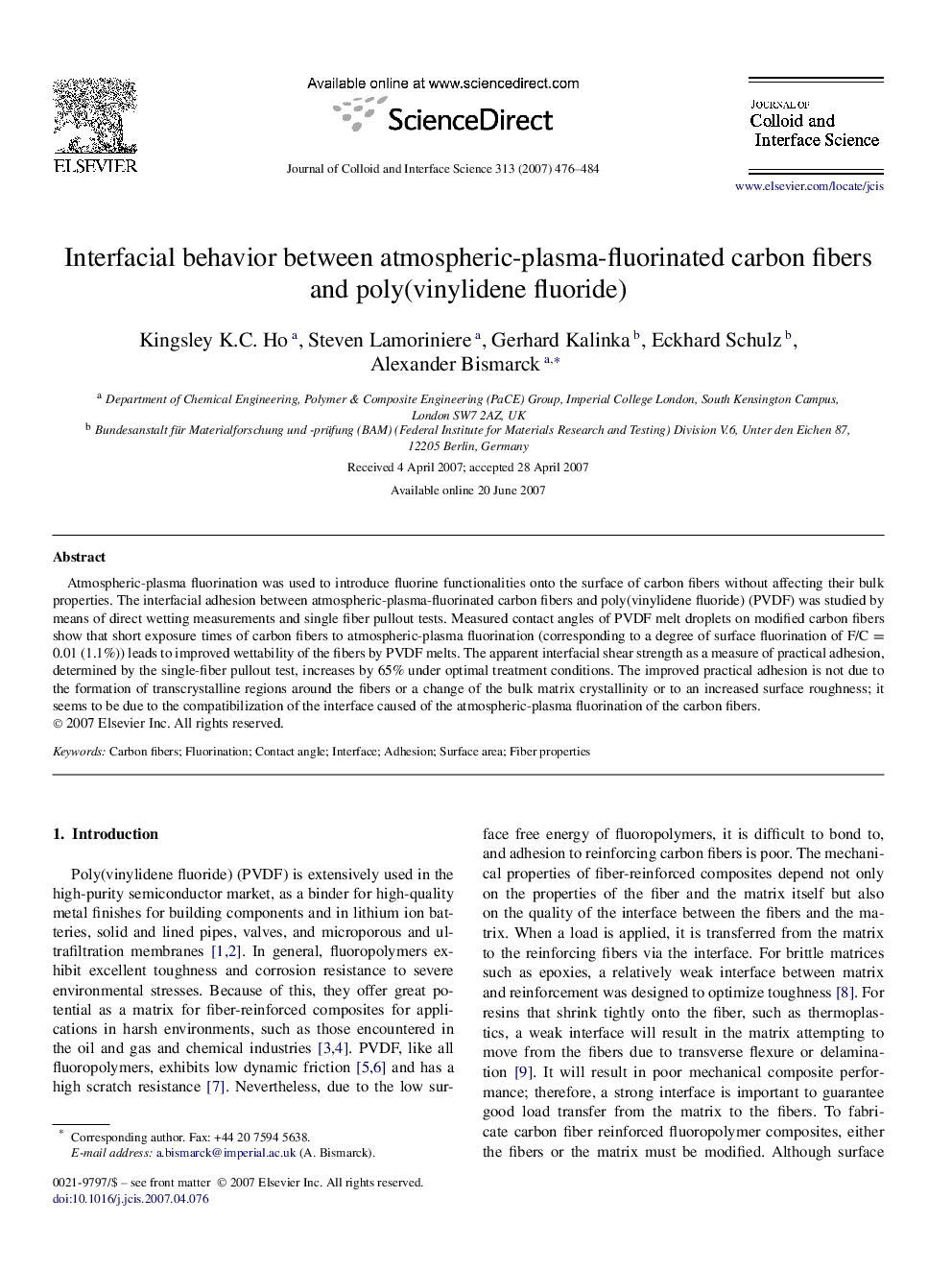| Article ID | Journal | Published Year | Pages | File Type |
|---|---|---|---|---|
| 611783 | Journal of Colloid and Interface Science | 2007 | 9 Pages |
Atmospheric-plasma fluorination was used to introduce fluorine functionalities onto the surface of carbon fibers without affecting their bulk properties. The interfacial adhesion between atmospheric-plasma-fluorinated carbon fibers and poly(vinylidene fluoride) (PVDF) was studied by means of direct wetting measurements and single fiber pullout tests. Measured contact angles of PVDF melt droplets on modified carbon fibers show that short exposure times of carbon fibers to atmospheric-plasma fluorination (corresponding to a degree of surface fluorination of F/C = 0.01 (1.1%)) leads to improved wettability of the fibers by PVDF melts. The apparent interfacial shear strength as a measure of practical adhesion, determined by the single-fiber pullout test, increases by 65% under optimal treatment conditions. The improved practical adhesion is not due to the formation of transcrystalline regions around the fibers or a change of the bulk matrix crystallinity or to an increased surface roughness; it seems to be due to the compatibilization of the interface caused of the atmospheric-plasma fluorination of the carbon fibers.
Graphical abstractThe impact of atmospheric-plasma fluorination of carbon fibers on the interaction between carbon fibers and poly(vinylidene fluoride) was studied by means of melt contact angle and interfacial shear strength measurements. Results show an improvement of 65% in the practical adhesion after only 1 min treatment.Figure optionsDownload full-size imageDownload as PowerPoint slide
